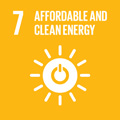- Docente: Marco Garavelli
- Credits: 5
- SSD: CHIM/02
- Language: English
- Teaching Mode: Traditional lectures
- Campus: Bologna
-
Corso:
Second cycle degree programme (LM) in
Advanced Spectroscopy in Chemistry (cod. 5706)
Also valid for Second cycle degree programme (LM) in Photochemistry and Molecular Materials (cod. 9074)
-
from Mar 05, 2025 to Jun 06, 2025
Learning outcomes
At the end of the course, the student will have acquired knowledge regarding the basic qualitative and quantitative tools for the study of the (photo)-reactivity of organic molecules. The student will be capable of predicting the electronic structure, properties and reaction mechanism of organic compounds, as well as of computing the (photo)-chemical reaction paths with state-of-the-art computational methods.
Course contents
The rational is provided for the use and the application of qualitative theoretical models (such as PMO, VB-Configuration Mixing, Correlation Diagrams, etc) to the understanding, modeling and prediction of chemical reactivity in (Photo)Chemistry. The fundamental quantitive theoretical tools of Computational (Photo)Chemistry, spanning post-HF quantum mechanical methods (such as MC-SCF and MR-PT2 approaches) and potential energy surface mapping algorithms (such as the Newton-Raphson and IRC methods), are also illustrated during classes and applied during the laboratory exercises, to solve actual problems of structure and reactivity in Photochemistry, Photobiology and Material Chemistry.
Readings/Bibliography
D.L. Andrews, Lasers in Chemistry, Springer, 3rd edition.
O. Svelto, Principles of Lasers, Plenum Press, 4th edition.
T. H. Lowry & K.S. Richardson, Mechanism and Theory in Organic Chemistry.
R.J. Sundberg & F.A. Carey, Advanced Organic Chemistry.
Scientific papers and other specifically prepared material.
Teaching methods
Lessons and exercises in the classroom for the theory (3 CFU) and computational exercises in the computational laboratory(2 CFU). Lab activity will be eventually finalised to deliver written reports on the computational experiences performed.
All students must attend Module 1, 2 on Health and Safety online:
https://elearning-sicurezza.unibo.it/
https://www.unibo.it/it/servizi-e-opportunita/salute-e-assistenza/salute-e-sicurezza/sicurezza-e-salute-nei-luoghi-di-studio-e-tirocinio
Assessment methods
A single written examination at the end of the semester, with theoretical questions and problems to solve (each one corresponding to a specific maximum score if correctly answered, for a total of 33 points equivalent to a final mark of 30 with Lode). The exam is passed with a minimum score of 18/30.
Lab reports will be required.
Teaching tools
Lessons and exercises in the classroom for the theory (3 CFU), and computational exercises in the computational laboratory(2 CFU), will be supported by slides show via digital equipments.
Workstations and software packages are used in the Computational Lab to explore and study reaction mechanisms in (Photo)Chemistry.
Office hours
See the website of Marco Garavelli
SDGs




This teaching activity contributes to the achievement of the Sustainable Development Goals of the UN 2030 Agenda.
